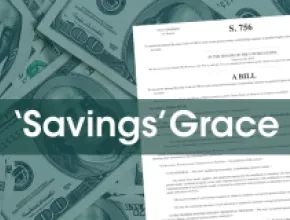Talk to many government employees who have meeting planning duties, and they’ll tell you their challenges in designing events and meeting objectives are unique.
Adhering to federal, state or local regulations can add significantly more stress to the meeting planning process. Per diem rates issued by the U.S. General Services Administration (GSA) prescribe what expenditures can be made on a meeting or event.
Legislative bodies and government agencies are frequently looking over their shoulders for compliances and reductions on expenditures. Today’s seller’s market ratchets the challenges up a few notches.
Industry trainers and veterans suggest many of the challenges government planners face are not all that peculiar. Other industry sectors—even those in corporate realms—also have regulations and constraints with which they must contend.
The new planning field may be more level than ever before, and government planners can succeed if they—like any of their peers in other industry sectors—will think outside of the proverbial box. Also, new developments have benefited government planners in a very practical way.
Per Diem Management
Per diem is the allowance that the government pays for lodging (excluding taxes), meals and incidental expenses in any given city, and those rates drive the buy and sell for government meetings. The rates are tied to the local market, and they change periodically.
Some per diems at both federal and state levels have increased recently, and the federal government has streamlined its methods of arriving at the numbers planners must use.
Federal rates are set by the GSA. According to Charles S. Sadler, CHSP, deputy director of the Society of Government Meeting Planners (SGMP), GSA has changed its methods for setting the rates, and the new procedure benefits government planners.
While GSA used to set per diems by calling hotels around the country every year to ask them for their average daily rates (ADR), the agency now uses Smith Travel Research’s Star Report to track ADRs, Sadler says.
“That report is the same one used by major hotel corporations and franchisees to set their ADRs,” he says. “This helps the government planner because it provides them with a more desirable ADR.”
State per diems often follow federal numbers, and recent rises in Tennessee rates have helped Beth Smith-Bell, an administrative assistant with the Tennessee Department of Commerce and Insurance, to plan her training meetings.
“Rates went up in mid-January, so hotels that wouldn’t even speak to us last December will now offer us something,” Smith-Bell says. “I have seen a spike in hotel interest since the rates increased. They don’t groan quite as loudly when we call.”
In Atlanta, SGMP First Vice President Ruth Harris, CMP, CGMP, who is a planner with the Centers for Disease Control & Prevention (CDC), says a higher per diem for Atlanta has helped, and so has GSA’s relaxation of regulations on the purchase of food.
“At one time, we couldn’t do breaks at all, but GSA has relaxed the regulations on that a little,” she says. “CDC regs are actually tighter, but we can do a continental breakfast and breaks so long as half of the people are on travel orders from CDC.”
Harris notes that hotels in Atlanta and elsewhere were really after her business following the events of 9/11, and they still come calling if they have holes in their schedules to fill. However, she finds that flexibility is still important because first choices are seldom available.
“Hotels will always plug in our business when they have a need, and some brands are easier to work with than others,” she says. “Marriott, for example, can typically find us something because of the large number of brands they have.”
So while per diems and other regulations continue to circumvent government planning, industry experts inside and outside government say federal, state and local planners are in a better position than ever to be more competitive for rates, dates and space.
Judith Miller, founder and CEO of the Judith Miller Group in Warwick, Pa., says government planners are on more of a level playing field with their peers now, and they need to begin acting like planners in other sectors. But they need to learn about the “tricks” experienced planners pull out of their bags, she adds.
“Many other planners have regulations and challenges that are specific to the industries they serve,” says Miller, who will be a presenter at SGMP’s annual education conference, scheduled for May 2-7 in Atlantic City, N.J. “I have worked with pharmaceutical companies for many years, and their code has been around for a long while. But it, too, changes every 10 minutes.”
During her presentation at the conference, Miller intends to deliver the message that government planners now have much more in common with planners in other industries.
“Now we have Sarbanes–Oxley (SOX) as well, so I intend to tell government planners, ‘I am one of you,’” she says. “Each planner sector has its own disciplines and regulations. Individuals just have to figure out ways to cope. The way I see it, the planner playing field is more level now than ever for government people.”
Creative Strategies
Miller is one of the annual conference presenters from outside government circles who has a mandate from SGMP to train attendees to think in new ways.
“We will be teaching them to be creative with their bottom lines,” she says. “I’ll be sharing what we have to do in the pharma sector, because we’ve had to re-tool in recent years to show more value and ROI. I have a bug about people who won’t think outside of the box, because they can get the job done with so much less pain when they do.”
Budgets don’t have to neutralize an event, Miller advises. In fact, there are areas where planners can “shave” expenses that won’t sabotage a meeting or even be noticed.
While Miller cautions that bad or cheap food should never be served at a meeting, she says planners should consult with the chef involved in the meeting on ways to save money.
“Chefs want to look good, and they know the shortcuts and ways to make things look pretty,” she says.
The audiovisual aspect of a meeting is another area where Miller says it is not advisable to cut corners.
“If you have bad AV, you have a bad meeting,” she says. “Even on the most basic level, if you put on a meeting where the projectors or PowerPoint presentations are poor, people will remember that as much as they’ll remember bad coffee.”
Booking second- and third-tier cities is another good strategy to stretch the budget, Miller says, advising government planners to work with CVBs.
“Bureaus are paid to sell their cities, so if a planner will work with them, they usually know where the best deals are,” she says.
SGMP Education
Besides help with the basics, SGMP has opportunities for more experienced government planners who want continuing education and support. Since SGMP introduced its Certified Government Meeting Planner (CGMP) program two years ago, 130 people have earned the standard to date.
This year’s annual meeting also will include several training tracks for novices, Sadler says, adding that many government employees have meeting planning as an adjunct duty and need lots of guidance. And, because personnel turnover is significant, there are many inexperienced people looking for help.
One program will teach attendees how to create an RFP with information that will make it more attractive to hotels.
“Federal government does have an option to pay 25 percent over per diem now if business is brisk, but some agencies don’t know how to get that,” Sadler says. “Also, if the meeting is 50 miles from the office base, agencies can buy food with certain resources like grants and federal money. So we’ll help planners create a budget that can pay for some expenses with various revenue streams.”
Attendees will also learn the best ways to work with CVBs that can broadcast their RFPs to multiple properties.
Some conference sessions will speak to both planners and suppliers who deal with government entities. These workshops include best practices to help both sides of the industry exceed internal and external customer expectations.
Other sessions will focus on leadership skills, offering ideas and strategies for taking the lead in conducting business and dealing with associates.
Networking Help
Along with the educational opportunities, SGMP leaders emphasize the networking opportunities available to both sides of the industry.
Half of the SGMP organization is composed of suppliers, according to James Morgan, CMP, CCM, business manager for Virginia State Parks and president of the Old Dominion Chapter of SGMP.
“I would encourage anyone who is having difficulty staying on budget to contact SGMP for help,” he says. “Many of our supplier members are government sales managers. They are a really good resource for newcomers and for folks who aren’t meeting professionals. They are professionals, and they can help a lot.”
Morgan also encourages planners to consider state park facilities for meetings as a way to stay within budgetary restraints.
So despite government regulations, a seller’s market and other challenges, government planners can now enjoy a more level playing field with planners in other sectors of the meetings industry.





